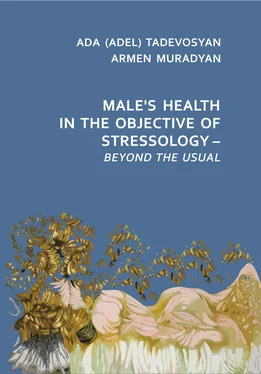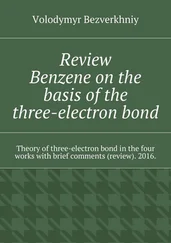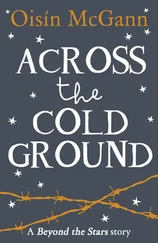
Salvador Dali, The infinite mystery (1938).
None of psychological terminological dictionaries contains an explanation of the concept “pleasure”, though “pleasure” refers to the category of psychological terms. It is most likely the result of evaluation work of the brain, which occurs after receiving information and its reflection in the form of sensation.
Sensation (Empfmdung) is a psychological function to comprehend the immediate reality through the sense organs. French psychologists call it “la fonction du reel” (a reality function), which is a set of knowledge of external factors obtained through the senses function. “The sensation does not tell me what it is, but only indicates that there is something”. The sensation, as an elementary initial phenomenon of cognition, is something definitely given, not subjected to rational laws, as opposed to thinking or feeling. Physiological sensitivity, which appears upon stroking the skin, is an elementary pleasure.
The presence of skin sensitivity is a genetic factor included into the human genetic program, which can be pleasant, because it does not cause muscle tension, but relaxes it. It can be added – a sensation is an initial change of homeostasis, the local “first wave” of the brain activity, excitement of mental element of the awakening brain. The ability to sense is the need, built into the genetic program, which is necessary for activation of the brain. The vital activity of the brain can be judged only due to a wave nature of the irritation sensation recorded by electroencephalogram.
Feeling – the second level of cognition – is the ability of a living being to perceive the amount of mental and physical sensations, to respond to external stimuli; it is the inner excitement of the whole mental ocean, in which a person lives and able to respond to life’s impressions: can experience the elation, the rush. Feeling is a psychological function, which informs the subject about the value of certain things for him, about their importance. The feeling above all is a process that takes place between the EGO and some given content, moreover, a process that gives the content a certain value in the sense of accepting or rejecting it (“pleasure” or “displeasure”). But at the same time, the feeling is also a process, which besides the specific content of consciousness as an amount of sensations of the moment, may originate in isolation, as the mood. In this case, there is a causal relationship with the earlier consciousness contents or association with the unconscious contents. However, the mood – be it general or only partial feeling – is an evidence of evaluation of the whole state of consciousness (pleasant or unpleasant) available at the moment, rather than evaluation of not specified, single content of consciousness. Therefore, the feeling is above all is quite a subjective process, which can be in all respects independent of external stimulation, though it is attached to every sensation. Even the “indifferent” sensation has “sensual coloring”, namely the coloring of indifference, which again expresses the well-known estimate.
Therefore the feeling is also a kind of judgment, which is different, however, from an intellectual judgment. Evaluation with the help of feeling covers all content of consciousness, whatever kind it may be. If the intensity of feeling is increased, there appears affect, accompanied with noticeable bodily innervations – it is already a storm. The feeling is different from the affect – it does not cause appreciable bodily innervations, i.e. causes no more and no less innervations than a normal thinking process. The sensations, all the more, feelings realize that part of the genetic program, that essentially important unit of it, which evaluates the incoming information of pleasant-unpleasant, “pleasure-displeasure”.
The concept “pleasure” belongs to psychoanalysis, according to which the activity of the mental apparatus begins with an unpleasant sensation (the principle of displeasure), which is automatically regulated by the principle of pleasure. The principle of displeasure/pleasure was understood in classical psychoanalysis as an initial concept, setting the program of mental functioning and based on the innate human unconscious desire to avoid displeasure and achieve pleasure. Freud, realizing lack of knowledge in physiology, neurophysiology, has come to the conclusion that pleasure is somehow connected with the decrease, reduction of the amount of irritations, while dissatisfaction – with their increase, and the mental apparatus serves the purpose of release from irritations coming in from outside and from within. He assumed that on the basis of the facts that prompted to accept the domination of the pleasure principle in mental life, we could talk about the internal tendency of the mental apparatus to keep the quantity of excitation in it is as low as possible, at a constant level. In accordance with this assumption, he expressed the idea of the need to take into account that in the mental life there also existed the principle of constancy ( homeostasis ), of which, strictly speaking, the pleasure principle was derived.
A newborn baby perceives the surrounding world as a flow of rapidly changing sensations. The bulk of the flow passes a baby because of underdeveloped receptors corresponding to these modalities. Immediately after the birth, skin and pain sensitivities in infants are the most advanced. Perhaps this is due to the fact that in the course of phylogeny, these sensitivities are the oldest. It is through them that a baby gets the first unpleasant sensations, which as the first irritants violate homeostasis, along with hunger and physiological needs. These irritants are the cause of the vibrating (oscillating) activity of the developing brain, which automatically switches the reflexes. Reflex motor activity eliminates the cause of displeasure, changing it to pleasure. A baby is experiencing the feeling of pleasure, first of all, from the pleasant tactile sensations. The baby is born with a pretty impressive collection of tactile reception. Even before birth, it felt the warmth of mother’s hands, touched cheeks with fingers, felt the movement of amniotic fluid as vibration sensations. The little one not merely heard these vibrations but felt by the whole body. A new world prepared a lot of tactile surprises for the baby. Kiss of mother is the first of them, the warmth of her skin – the second. There are so many further discoveries that the count is lost. A newborn baby comes into the world, keeping in stock a large set of behaviors based on the unconditioned reflexes. Most of them are vital for the baby. For example, if you stroke a newborn’s cheek, he turns the head and looks for a pacifier with lips. If you put a pacifier in his mouth, the child will automatically start sucking it. Sensations of different modalities have different dynamics in the development; their degree of maturity at different times is different.
Psychoanalysis practically did not pay due attention to the phenomenon of pain as the cause of vibration and sensation of displeasure. And as claimed by K. E. Izard (1999), the pain is the underlying motivation, which causes a great variety of negative emotions. It cannot be disagreed. Both tactile skin and nonspecific pain receptors are spread throughout the body and are sites of entry through which reality penetrates and stimulates the development of the inner mental world. Nonspecific theory of the origin of pain impulses, or the intensity theory was developed by various authors, including A. Goldscheider (1894). According to this theory, sensation of pain is caused by intense stimulation of different nonspecific sensory receptors (temperature, pressure, visceral, and others) and conduct of pain impulses to certain brain formations. Based on this theory, we can talk about the infancy period of nonspecific pain prevalence. Modern pain theories already relate to a specific phase of the pain as a consequence of psychodynamics. The data of both foreign and domestic scientists (Dionesov S. M., 1963; Reynolds, 1969; Terenius, Schneider, Perth, 1973; Kryzhanovsky G. N., 1973–1993; Kassil G. N. 1975; Kalyuzhny L. V., 1984; Filin V. I., Tolstoy, A.D., 1996, Reshetnyak V. K., Kukushkin M. L., 2001, and others) single out specific pain receptors, specific afferent pathways and specific brain structures forming pain sensation and body responses to it. According to this theory, the pain arises due to the prevalence of activity of nociceptive (algogenic) system over activity constantly functioning in a healthy body of antinociceptive (antialgogenic) system.
Читать дальше













